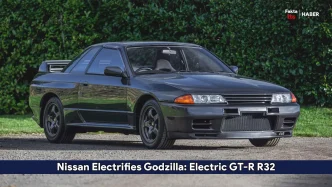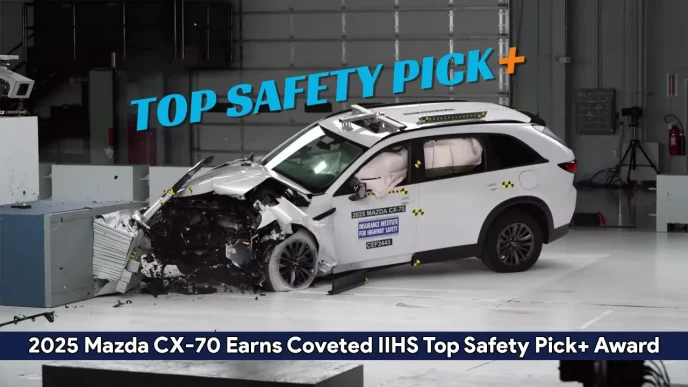Switching to an electric vehicle (EV) seems to forever change how drivers view traditional combustion cars. According to a recent study conducted by the Global EV Alliance, an overwhelming 92% of EV owners surveyed indicated they would not revert to gasoline or diesel vehicles. The survey, which compiled responses from more than 23,000 EV drivers across 18 countries, including major markets like the United States, Brazil, Germany, and Norway, paints a clear picture: once drivers experience the benefits of EVs, they find it difficult to return to internal combustion engines (ICE).
The report offers fascinating insights into the evolving attitudes toward electric vehicles, the factors driving this preference, and the remaining hurdles for broader EV adoption.
EV Satisfaction Levels Remain High Worldwide
Out of the survey’s 23,000 respondents, only a tiny fraction – 1% – said they would return to a pure gasoline or diesel vehicle, while 4% stated they would consider switching to a plug-in hybrid (PHEV). These numbers underscore the growing contentment among EV users.
According to Petter Haugneland, the Assistant Secretary General of the Norwegian EV Association, this data challenges recent media reports suggesting a decline in EV popularity. Haugneland remarked:
“These results confirm that EV drivers are highly satisfied with their choice and that reports of declining EV popularity are greatly exaggerated.”
This comes despite headlines suggesting a slowdown in the EV market. In reality, the number of EVs sold globally has continued to rise throughout 2024.
Why Do Drivers Prefer EVs?
The survey also explored the key reasons why people choose electric vehicles. The top three motivators cited by respondents were:
- Lower operating costs compared to gasoline or diesel cars.
- Environmental benefits, as EVs produce fewer emissions.
- Reduced noise levels, offering a quieter driving experience.
These advantages leave a lasting impression on EV owners, making them less likely to switch back to traditional vehicles.
How Charging Infrastructure Shapes Perceptions
Despite the overall satisfaction, the study highlighted how the state of charging infrastructure influences drivers’ experiences in different regions. For example, 72% of respondents said they primarily charge their EVs at home, while 13% rely on public fast-charging stations, and 7% use public AC chargers in parking areas.
When asked about the downsides of owning an EV, the most common responses were:
- Inadequate fast-charger coverage.
- Lengthy charging times.
- Frequent issues with chargers being out of service.
In Brazil, EV owners reported that taking long trips required more meticulous planning compared to driving an ICE vehicle. However, drivers in countries like Germany, Switzerland, and Sweden did not perceive a significant difference in road trip planning between EVs and traditional cars.
Range Anxiety Varies by Region
Interestingly, the survey showed that range anxiety – the fear of running out of battery power – is not uniformly felt around the globe. In countries like India and Brazil, drivers reported higher levels of range anxiety. In contrast, respondents in Germany and Switzerland were generally unconcerned about their vehicle’s range.
Even in Norway, a leader in EV adoption, drivers reported higher-than-average range anxiety, despite the country’s robust charging infrastructure.
The Reality of Fast-Charger Queues and Downtime
Another challenge highlighted by the survey is the availability and reliability of public chargers. Although queuing for a fast charger is a real issue in some areas, only 3% of respondents said they frequently encountered this problem. In comparison, 40% said it was rarely an issue, and 28% reported never facing long waits for charging.
However, 27% of respondents did experience issues with chargers not functioning properly, and 5% said these problems occurred often.
Payment Convenience Needs Improvement
A significant portion of EV drivers expressed frustration with the lack of standardized payment methods at charging stations. More than 50% strongly agreed that charging should be as simple as tapping a card, rather than having to download multiple apps for different charging networks. Achieving this level of convenience, however, will likely require centralized regulation and greater standardization across the industry.
Norway Leads the EV Revolution
When it comes to EV adoption, Norway remains the undisputed leader. In November 2024, EVs accounted for 94% of new car sales in the country, up from 81% the previous year. The Tesla Model Y topped the sales charts, followed closely by the Tesla Model 3. This rapid transition means that EVs in Norway will soon outnumber gasoline and diesel vehicles on the roads.
China and the U.S. Show Steady Growth
China continues to be a powerhouse in the EV market. In August 2024 alone, the country saw the delivery of 1 million hybrid and plug-in vehicles. Of these, 582,813 were pure battery electric vehicles (BEVs), while 444,270 were plug-in hybrids (PHEVs). Chinese automakers are now looking to expand their reach beyond domestic borders, despite facing challenges such as new import tariffs in Europe and North America.
In the United States, EV sales are also on the rise. Data from Cox Automotive reveals that in Q3 2024, EVs represented 8.9% of all new car sales, up from 7.8% in Q3 2023. However, the share of EVs in the overall light-duty vehicle market dipped slightly, from 7.4% in Q2 to 7% in Q3. Despite this, the total number of EVs sold continues to increase year over year.
The Road Ahead for EVs
The findings from the Global EV Survey indicate a clear trend: once drivers switch to electric vehicles, they rarely look back. While challenges remain – such as improving charging infrastructure, reducing range anxiety, and simplifying payment systems – the advantages of EVs are compelling enough to keep most drivers firmly committed to electric mobility.
As technology advances and infrastructure catches up, the shift toward electric vehicles is poised to accelerate even further, reshaping the future of transportation worldwide.













